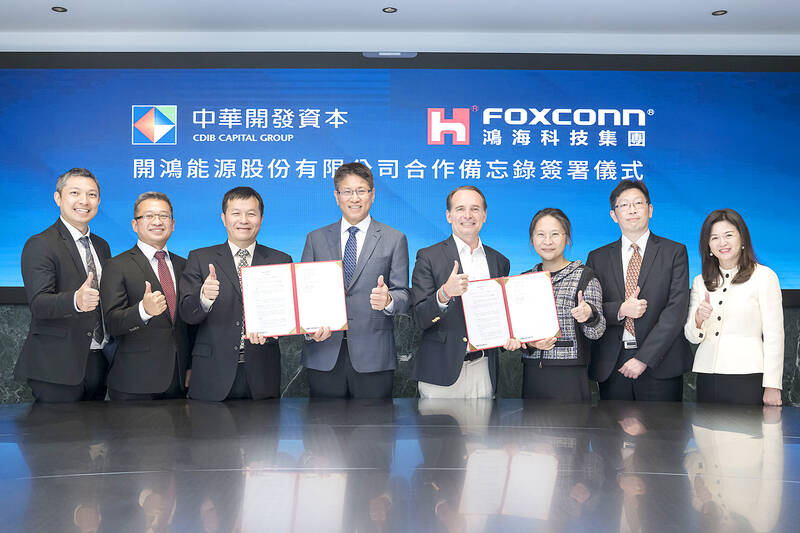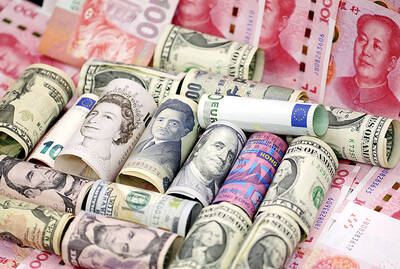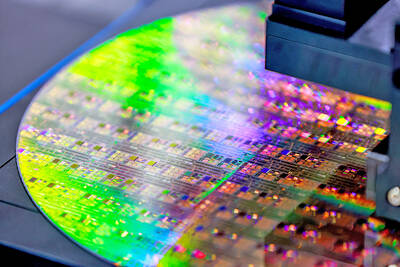Hon Hai Precision Industry Co (鴻海精密) yesterday said it has inked a memorandum of understanding (MOU) with CDIB Capital Group (中華開發資本) to create a green energy venture with initial capital of NT$6 billion (US$194.74 million), with an aim to help supply chain partners gain better access to clean energy.
The newly created Kai-Hong Energy Co (開鴻能源) would invest in renewable energy projects in Taiwan, such as solar and wind energy, and energy storage facilities, catering to the growing demand for green energy as major technology companies in the US and Europe join zero carbon emission plans, and have asked their local partners to follow suit, the MOU says.
Hon Hai and CDIB Capital would each hold an insignificant stake in Kai-Hong Energy, allowing their supply chain partners to secure a share of the new venture, it says.

Photo courtesy of Hon Hai Precision Industry Co
The two firms are to meet with executives from companies in their supply chain today to discuss details about how to invest in Kai-Hong Energy, it said.
“Kai-Hong Energy is the first green energy investment platform jointly created by companies from the technology and financial sectors,” Hon Hai spokesman James Wu (巫俊毅) said in a joint statement. “The venture would help the local industry’s transition to green energy by securing more clean energy sources.”
CDIB Capital has expertise in renewable energy, as the private equity fund has been handling investment and financing arrangements for private power plants since Taiwan in 1995 deregulated the industry, the statement said.
In the long run, the venture aims to generate substantial returns, and create a win-win situation for local companies, financial institutions and green energy developers, it said.
In a separate statement, Hon Hai said it has signed an agreement with We Energies to install 2,000 solar panels at its manufacturing campus in Wisconsin. The one-megawatt project is capable of producing enough energy to power 300 homes.
We Energies is a Wisconsin-based utility company of WEC Energy Group.
The solar installations are to supply 1.5 megawatts per hour to production lines there, Hon Hai said.
We Energy Group plans to seek approval from the Wisconsin state government to install solar panels this spring, it said.
Hon Hai has invested more than US$1 billion in the Wisconsin plant and hired more than 1,000 employees. The plant produces servers and motherboards.

The US government on Wednesday sanctioned more than two dozen companies in China, Turkey and the United Arab Emirates, including offshoots of a US chip firm, accusing the businesses of providing illicit support to Iran’s military or proxies. The US Department of Commerce included two subsidiaries of US-based chip distributor Arrow Electronics Inc (艾睿電子) on its so-called entity list published on the federal register for facilitating purchases by Iran’s proxies of US tech. Arrow spokesman John Hourigan said that the subsidiaries have been operating in full compliance with US export control regulations and his company is discussing with the US Bureau of

Taiwan’s foreign exchange reserves hit a record high at the end of last month, surpassing the US$600 billion mark for the first time, the central bank said yesterday. Last month, the country’s foreign exchange reserves rose US$5.51 billion from a month earlier to reach US$602.94 billion due to an increase in returns from the central bank’s portfolio management, the movement of other foreign currencies in the portfolio against the US dollar and the bank’s efforts to smooth the volatility of the New Taiwan dollar. Department of Foreign Exchange Director-General Eugene Tsai (蔡炯民)said a rate cut cycle launched by the US Federal Reserve

Taiwan’s rapidly aging population is fueling a sharp increase in homes occupied solely by elderly people, a trend that is reshaping the nation’s housing market and social fabric, real-estate brokers said yesterday. About 850,000 residences were occupied by elderly people in the first quarter, including 655,000 that housed only one resident, the Ministry of the Interior said. The figures have nearly doubled from a decade earlier, Great Home Realty Co (大家房屋) said, as people aged 65 and older now make up 20.8 percent of the population. “The so-called silver tsunami represents more than just a demographic shift — it could fundamentally redefine the

Businesses across the global semiconductor supply chain are bracing themselves for disruptions from an escalating trade war, after China imposed curbs on rare earth mineral exports and the US responded with additional tariffs and restrictions on software sales to the Asian nation. China’s restrictions, the most targeted move yet to limit supplies of rare earth materials, represent the first major attempt by Beijing to exercise long-arm jurisdiction over foreign companies to target the semiconductor industry, threatening to stall the chips powering the artificial intelligence (AI) boom. They prompted US President Donald Trump on Friday to announce that he would impose an additional